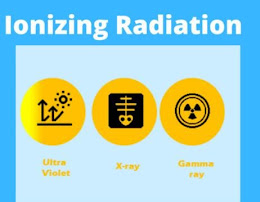Leukemia : Complete Description and Diagnosis
Types of Leukemia:
Leukemia can be broadly categorized into four main types:
1: Acute Lymphoblastic Leukemia (ALL): This is the most common type of leukemia in children but can also affect adults. It develops rapidly and involves the overproduction of immature lymphoid cells, a type of white blood cell.
2: Acute Myeloid Leukemia (AML): AML primarily affects adults but can occur in children as well. It involves the rapid growth of immature myeloid cells, which are responsible for the production of various types of blood cells.
3: Chronic Lymphocytic Leukemia (CLL): CLL is more common in older adults and progresses slowly. It involves the overproduction of mature but abnormal lymphocytes, a type of white blood cell.
4: Chronic Myeloid Leukemia (CML): CML typically affects adults and is characterized by the excessive growth of mature myeloid cells. It often progresses slowly at first but can accelerate into a more aggressive phase.
Causes of Leukemia:
The exact causes of leukemia are not fully understood. However, certain risk factors have been identified:
1: Genetic Factors: Some individuals may inherit genetic mutations that increase their risk of developing leukemia.
2: Environmental Factors: Exposure to certain chemicals, such as benzene and formaldehyde, can increase the risk of developing leukemia. Radiation exposure, including ionizing radiation, is also a known risk factor.
3: Medical Treatments: Previous treatment with chemotherapy and radiation therapy for other cancers can increase the risk of developing leukemia later in life.
4: Certain Medical Conditions: Certain genetic disorders, such as Down syndrome, and certain blood disorders, such as myelodysplastic syndrome (MDS), are associated with a higher risk of leukemia.
Symptoms of Leukemia:
The symptoms of leukemia can vary depending on the type and stage of the disease. Some common symptoms include:
1: Fatigue and weakness
2: Frequent infections
3: Easy bruising or bleeding
4: Bone or joint pain
5: Enlarged lymph nodes, spleen, or liver
6: Unexplained weight loss
7: Night sweats
8: Shortness of breath
9: Fever
10: Pale skin
Diagnosis of Leukemia:
Diagnosing leukemia involves a combination of medical history assessment, physical examination, and various laboratory and imaging tests. The diagnostic process typically includes the following:
1: Medical History and Physical Examination: The doctor will ask about symptoms, risk factors, and family history, followed by a thorough physical examination.
2: Blood Tests: Blood samples are taken to evaluate the number and characteristics of different blood cells. Abnormalities in blood cell counts and morphology can indicate leukemia.
3: Bone Marrow Aspiration and Biopsy: A small sample of bone marrow is extracted from the hipbone or another suitable site using a needle. The sample is examined under a microscope to analyze the cells for signs of leukemia.
4: Cytogenetic Analysis: This test examines the chromosomes in leukemia cells to identify specific genetic abnormalities associated with certain types of leukemia.
5: Flow Cytometry: This test uses fluorescently labeled antibodies to detect and analyze specific markers on leukemia cells. It helps determine the type of leukemia and its stage.
5: Imaging Tests: X-rays, computed tomography (CT) scans, magnetic resonance imaging (MRI), or positron emission tomography (PET) scans may be conducted to assess the extent of the disease and detect any organ involvement.
Treatment Options for Leukemia:
1: Treatment options for leukemia depend on the type, stage, and other factors such as the patient's age and overall health. The primary treatment modalities include:
2: Chemotherapy: The use of anti-cancer drugs to kill leukemia cells or prevent their growth and division.
3: Radiation Therapy: High-energy radiation is targeted at specific areas of the body to kill leukemia cells.
5: Targeted Therapy: Drugs that specifically target certain genetic mutations or proteins involved in leukemia cell growth are used. These drugs are often more precise and cause fewer side effects compared to traditional chemotherapy.
6: Immunotherapy: This approach harnesses the body's immune system to recognize and attack leukemia cells. It can include monoclonal antibodies, checkpoint inhibitors, or adoptive cell therapy.
7: Clinical Trials: Participation in clinical trials provides access to experimental treatments and new therapeutic approaches that are being evaluated for their safety and effectiveness.
The choice of treatment depends on multiple factors and is determined by a multidisciplinary team of healthcare professionals, including oncologists, hematologists, and other specialists.
In conclusion, leukemia is a complex and diverse group of blood cancers characterized by the abnormal growth and accumulation of white blood cells. Its diagnosis involves various tests, and treatment options include chemotherapy, radiation therapy, stem cell transplantation, targeted therapy, immunotherapy, and participation in clinical trials. Early detection and prompt treatment are crucial for improving outcomes, and ongoing research continues to advance our understanding and treatment of this disease.








Comments
Post a Comment